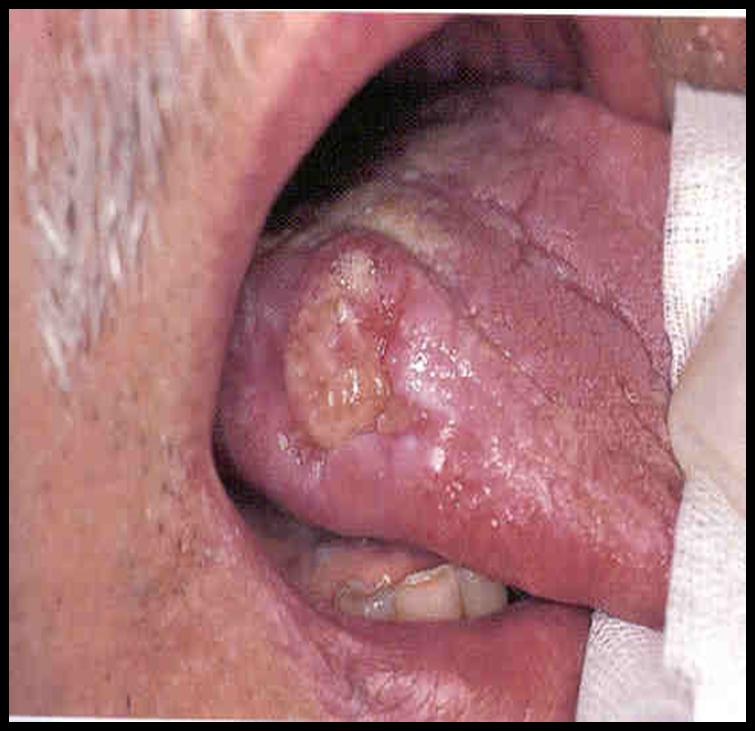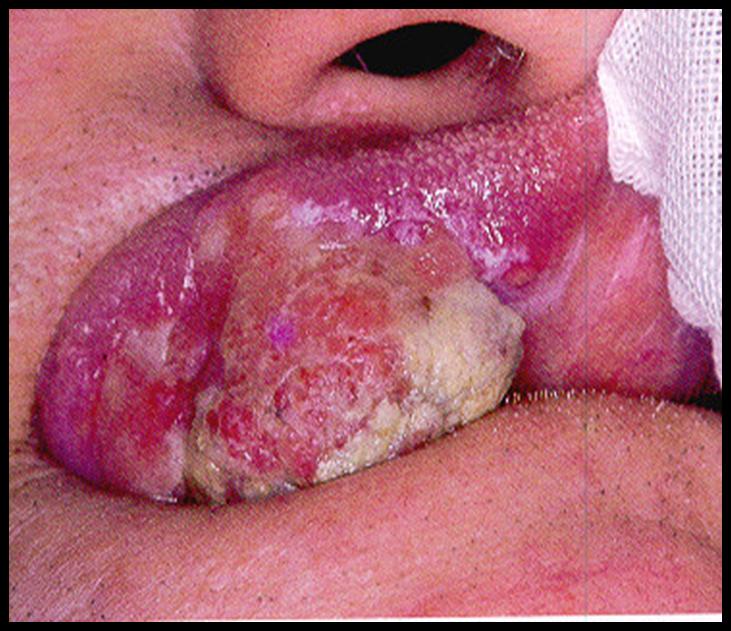Overview
Oral cancer is an abnormal growth of tissues in and around the oral cavity. Oral cancers detected early and treated adequately can prevent severe damage to the body and improve the lives of oral cancer patients.
Common sites in the mouth:
Common sites of oral cancer in the mouth:
- Tongue
- Floor of the mouth
- Inside lining of the cheeks
- Gums
- Roof of the mouth (palate)
- Lower lip
Risk factors
The habits listed below are contributing factors to oral cancer:
- Smoking tobacco (cigarettes, pipes or cigars)
- Chewing tobacco
- Chewing betel nut with or without tobacco
- Drinking alcohol excessively
- Excessive exposure to sunlight.
What are the signs of oral cancer?
Look out for the following:
- Non healing ulcers for more than 2 weeks.
- White patches (leukoplakia) or red patches (erythroplakia).
- Persistent lump or growth in the mouth.
- Bad breath (halitosis).
- Enlargement of the lymph nodes
How to diagnose oral cancer?
- Biopsy ( analysis of tissue taken from the suspected pathology )
- Imaging ( radiographic analysis of the part of the body related to the spread of the pathology ). This includes
- Plain radiograph
- CT Scan
- MRI (Magnetic Resonance Imaging)
- Technitium bone scan
- Ultrasound
Prognosis
Prognosis of oral cancer depends on a number of factors.
- Site of the pathology ( cancer of the lip has a better prognosis than cancer of the tongue )
- Size ( smaller pathology will have a better prognosis )
- Staging ( the greater the staging of the disease, the worst is the prognosis )
- Depth of invasion ( the deeper the penetration of the cancer cells into the tissue, the worst is the prognosis )
- Metastasis ( prognosis is poor if the cancer cells has spread to the other part of the body )
- Advanced age ( the older you are, the worst is the prognosis )
Mode of treatment
- Surgery
- Radiotherapy
- Chemotherapy
- Combination of any of the above
Complications
- Facial deformity
- Loss of apetite
- Pain
- Difficulty in swallowing
- Difficulty to talk
- Limited mouth opening
- Loss of weight
- Depression
- Metastasis (transfer) of cancerous cells to other parts of the body
- Death
What can you do?
Chances of getting oral cancer can be reduced by:
- Stop or not smoking
- Avoid alcoholic drinks
- Quit chewing tobacco or betel nut
- Limiting exposure to the sun
- Have a regular dental check-up
- Do self-examination of your mouth periodically
- Healthy life style
Oral cancer and Smoking Cessation
Smoking cessation for more than 3 years can reduce the risk of developing oral cancer by 50%.
Self -Examination for oral cancer
- Stand in front of a mirror under good lighting and use your forefingers and thumbs to pull facial tissue aside to get a good view of the inner lining of the mouth.
- Look for white or red patches and especially any sores, ulcers or patches that do not heal.
- Use your thumbs and fingers to check for any lumps or changes in the texture of the tissues. If you notice any warning signs of oral cancer or any other mouth problems, consult your dentist.
Steps in self examination of mouth :-
|
|
Use a bright light and mirror.Dentures, if any should be removed prior to mouth examination Look at your face and neck in the mirror for any swellings, sores or any changes in colour. Press along the sides and front of the neck to feel for any tenderness or lumps. |
|
|
Examine the lips in closed and open positions. Look for any changes of colour, texture and surface abnormality. Raise upper lip and look inside for any ulcers or colour changes. Feel for any lumps or changes in texture. Repeat this procedure on your lower lip. |
|
|
Pull right cheek back to look at the buccal mucosa. Also check the upper and lower buccal sulcus. Put your index finger on the inside of your cheek and your thumb on the outside. Gently feel to check for any lumps. Repeat on the other cheek. |
|
|
Tilt your head back and open your mouth wide to see the roof and back of your mouth. Note any changes or lumps |
|
|
Place the tip of your finger on your palate. Examine the floor of your mouth and lingual sulcus. |
|
|
Stick out your tongue and look for any changes in colour and texture. Inspect and gently press along the underside of your tongue to feel for any swelling. Inspect the right and left margins and the tip of your tongue. |
| Last reviewed | : | 14 April 2014 |
| Writer | : | Dr. Che Noor Aini bt. Che Omar |
| Dr. Sharol Lail Sujak | ||
| Dr. Chew Yoke Yuen | ||
| Dr. Norrizan bt. Basir | ||
| Dr. Doreyat b. Jemun | ||
| Reviewer | : | Dr. Marzuki b. Zainal Abidin |









